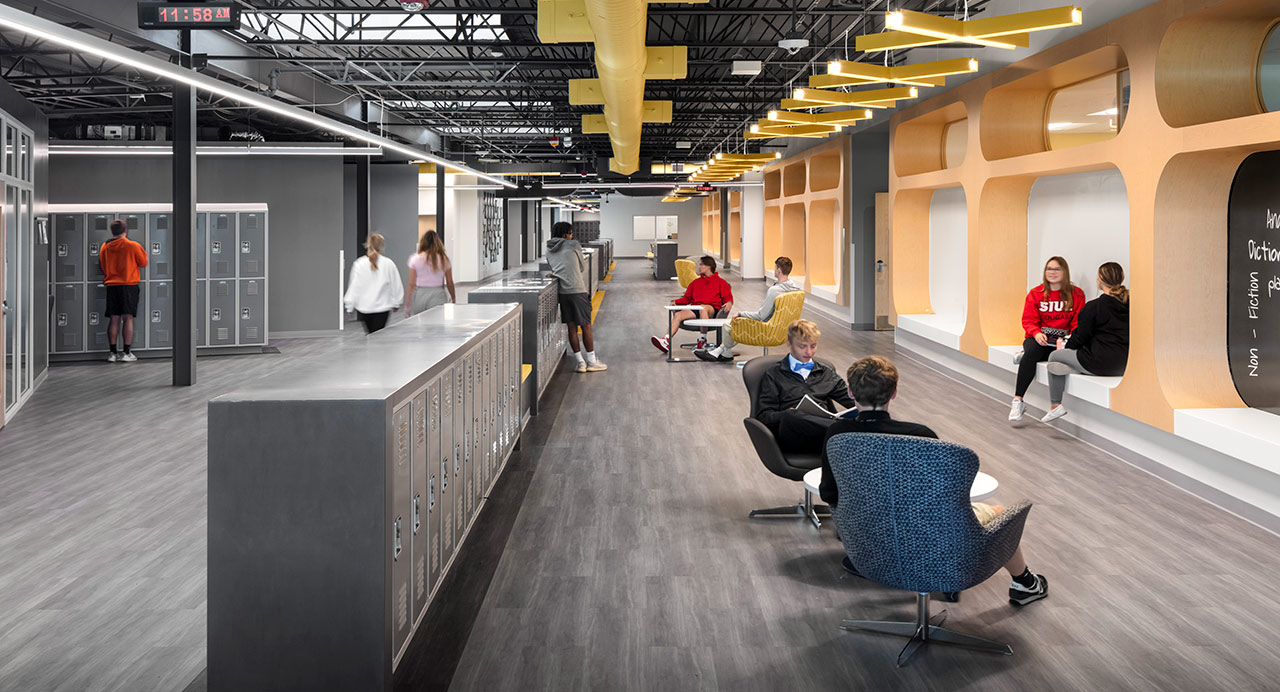
Additions and renovations transform outdated high school into junior-senior high school with efficient systems, enhanced curriculum, and collegiate setting
When John Asplund became superintendent of Galesburg Community Unit School District #205 in 2017, a declining city population had gradually dropped district enrollment from 8,200 students at its peak to roughly 3,900 students. Nowhere was the decline more apparent than at Galesburg High School — it was built for 2,400 kids in 1957 but only housed half that in 2017.
The school was far too large, resulting in wasted space. Asplund and the CUSD #205 Board of Education, working with Legat Architects, determined to transform the high school into a junior-senior high school.
This presented another challenge: the substandard condition of the 60-year-old school. The original boilers were a huge drain on energy bills. Lack of central air conditioning resulted in stifling spaces, especially on the second floor during the first two months of the school year. Locker rooms had no water because the pipes were so corroded.
Then there was the appearance of the facility. “It was old and it looked old,” said Asplund. “Not in a charming way but in a depressing way.”
After four phases of construction led by Russell, the facility has reemerged as Galesburg Junior Senior High School. The Legat-designed additions and renovations touch nearly every part of the 300,000-square-foot facility. It not only welcomes seventh and eighth graders from two former middle schools but also allows the district to expand its curriculum, ease transitions between grade levels, and use spaces much more efficiently.

Improvements range from window repairs and infrastructure upgrades like new, energy-efficient plumbing and HVAC systems — no more stuffy classrooms or waterless locker rooms — to expanded food services and fine arts programs.
“Spaces that were rarely used before are now used all the time, and there are many more opportunities for classes to work together,” said Asplund.
The revitalized Galesburg Junior Senior High School, with its light-filled corridors and plentiful seating options, also creates a more collegiate learning environment.
Asplund quoted an assistant principal to sum up the revived setting: “This looks like what a college would hope it looks like.”
Organization: An Academic Advantage
Some community members expressed concerns about mixing seventh and eighth graders with high schoolers. The district and Legat created an arrangement that responds and even provides an academic advantage by easing the transition between grades.
The floor plan locates the seventh and eighth grades on the upper level of the existing facility and the ninth grade on the lower level. A one-story addition houses 10th through 12th graders. A new seventh through ninth grade entry further reduces the intimidation factor as younger students approach the school.
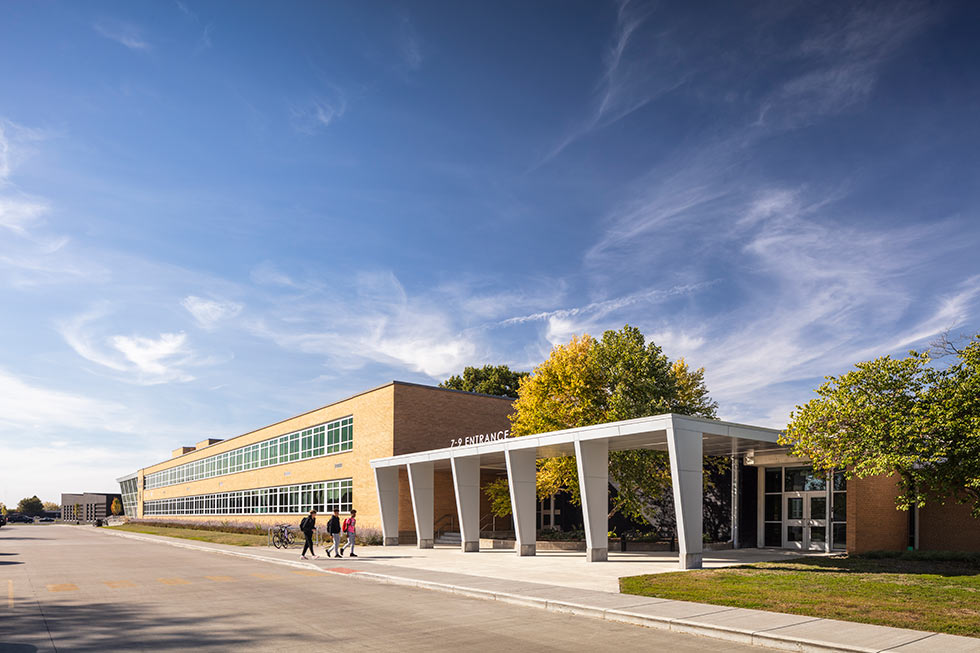
“The organization keeps the oldest and youngest separated, with the ninth grade acting as a pivot between them,” said Legat’s Bryan Archibald.
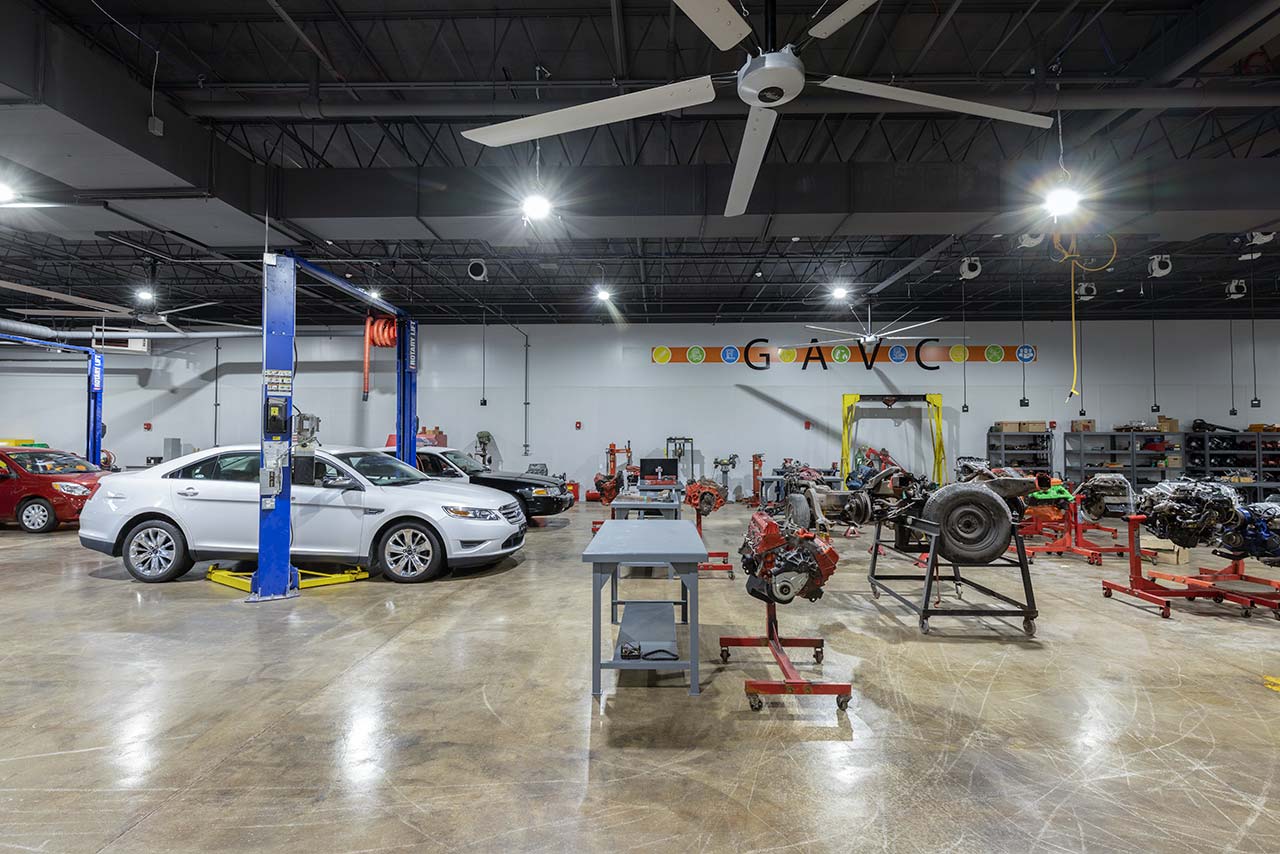
To open more space for high school programming, the district moved the vocational program into a former church across the street. The Galesburg Area Vocational Center, also designed by Legat, hosts technical career training. More than 100 additional students have signed up for the vocational program since the completion of the retrofit.

Reviving a Love for the Fine Arts
According to Asplund, Galesburg has long had an investment in the fine arts, which is rare for a rural community in western Illinois.
The enrollment decrease, however, had reduced growth in the high school’s once-strong band program. The vacated vocational center space allowed for a new band room. Band enrollment has since increased from 110 to 125, and Asplund expects it to go as high as 200 within the next four years.
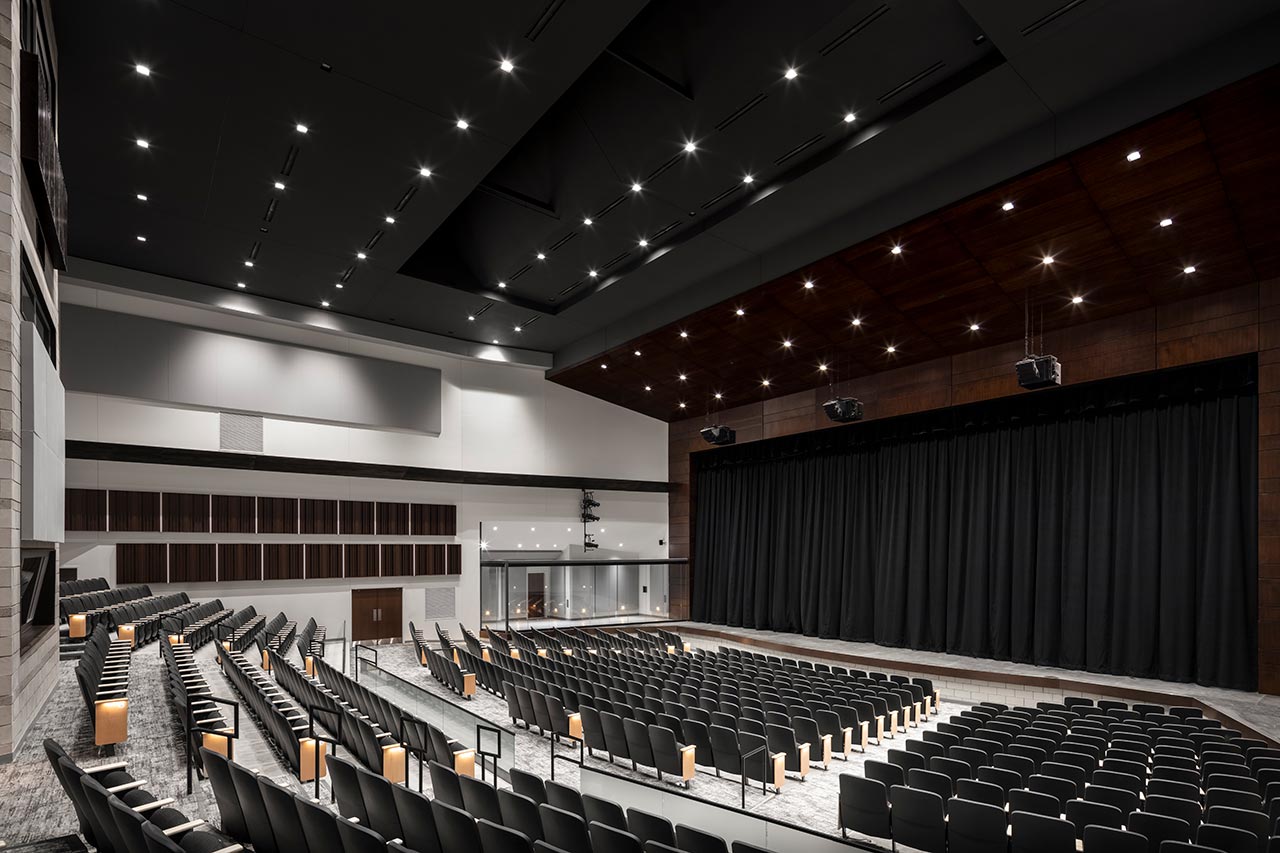
One of the school’s most grandiose spaces, the Hegg Performing Arts Center, was too large; with its 2,400 seats, it took up a substantial portion of the school’s footprint, but it was rarely used and would only be filled once a year at graduation. Compounding the problem were the poor acoustics of the original design and the absence of air conditioning.
The revived Hegg Performing Arts Center, with its 640 seats, upgraded acoustics, and central air, offers a smaller and more intimate venue. And unlike the old space, audience members can now see musicians in the orchestral pit, which in turn offers views to the performers.
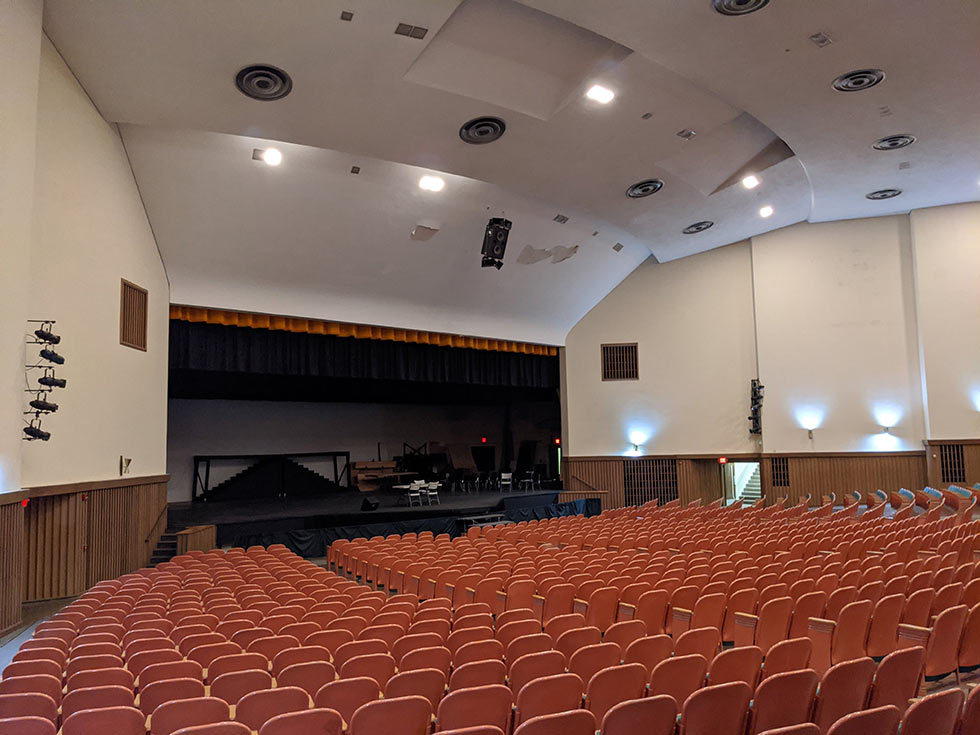
The theater now sees daily use: seminars, school gatherings, teacher improvement functions, and much more. It has hosted performances ranging from the high school’s production of “The SpongeBob Musical” to concerts by the Knox-Galesburg Symphony, which now calls the Hegg Performing Arts Center its home.
Asplund and his colleagues have conducted many tours of the rejuvenated center. Several visitors who work in fine arts programs at major universities said that the space offers an aesthetic and acoustic experience superior to that at their school theaters.
“It’s more exciting for the audience members to see and for performers to be on stage, and you can pick out the individual instruments because the acoustics are so much better,” he said. “It’s gone from an eyesore and a liability to an unbelievable place to hold a performance.”
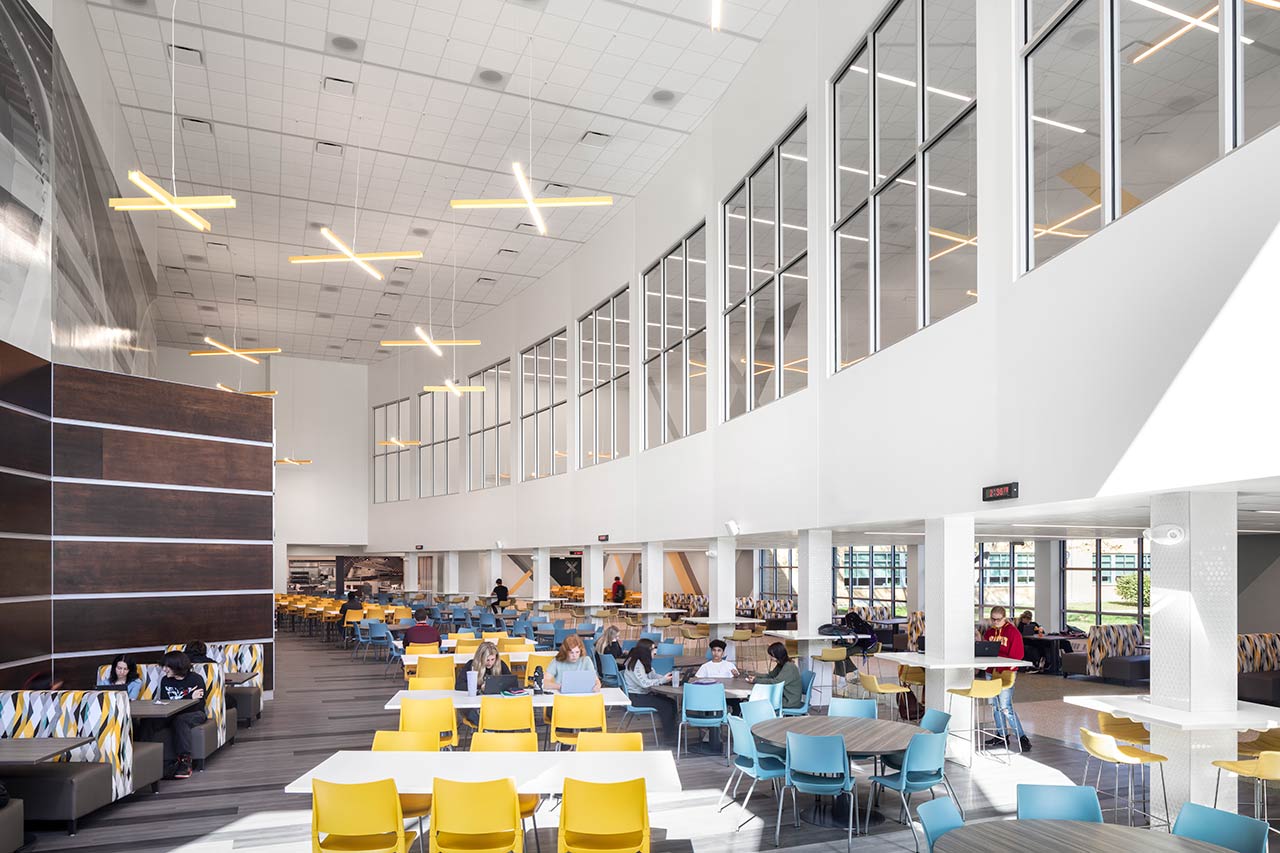
An Astonishing Transformation
Upgrades throughout the facility create a more mature environment to help pave the way for college academically and psychologically. Students gravitate to corridors with skylights, contemporary lighting, and writable wall surfaces. Special education students run a new café/coffee shop off the main entrance.
The shift to a collegiate environment is most evident in the expanded, two-level commons. The top floor seats seventh and eighth graders, and the lower floor accommodates ninth through 12th graders. Large picture windows bring in light and views to the campus, and interior windows visually connect the levels.
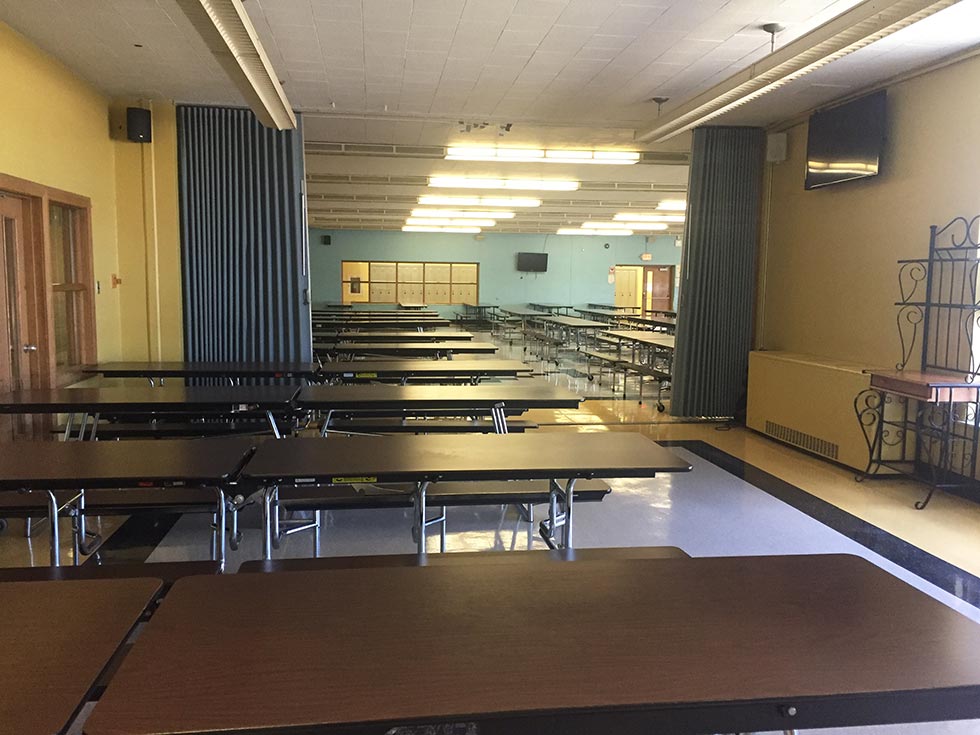
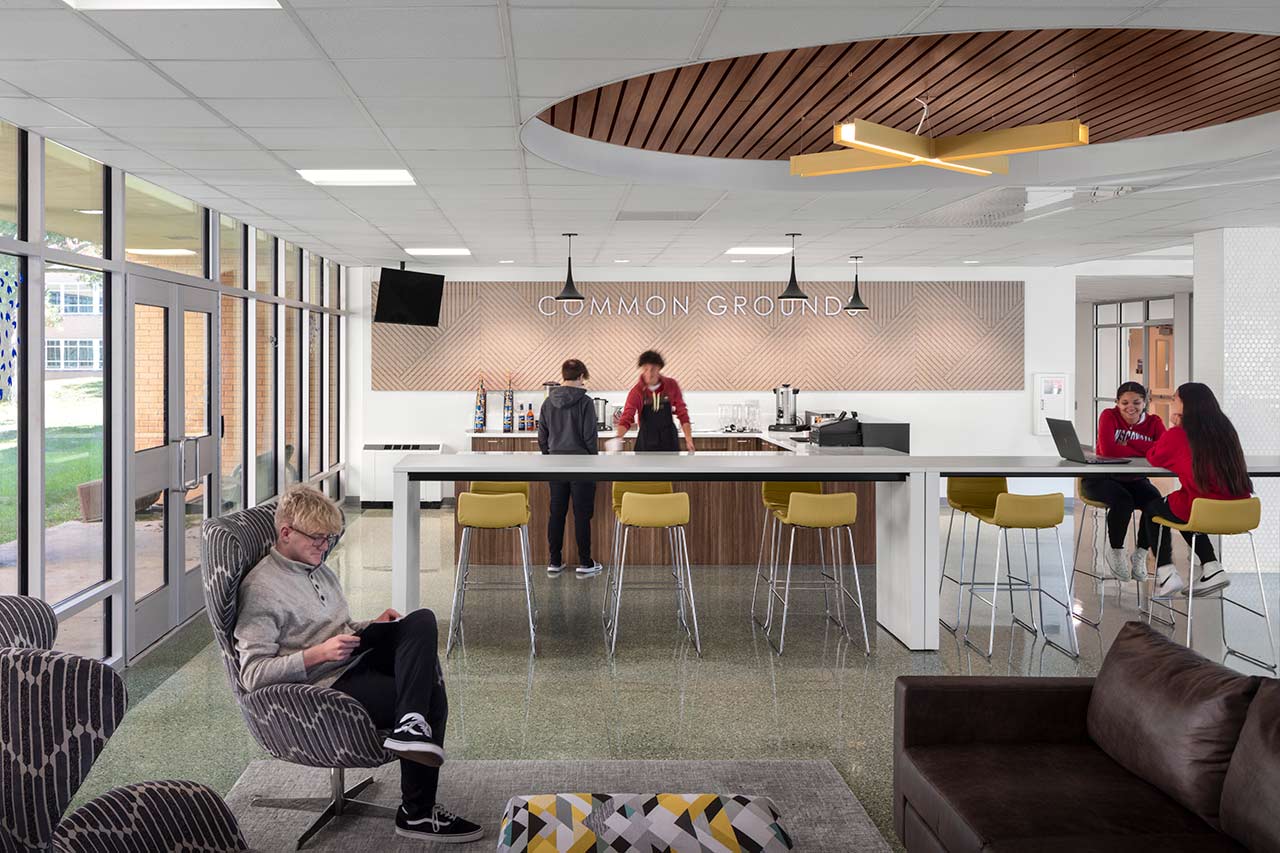
What made the commons expansion possible was the demolition of the oversized theater’s balcony, an idea that Archibald attributes to the district.
Asplund said that classes often have lessons in the commons, and students enrolled in dual-credit courses at the nearby community college frequently work in the space.
“That space was inhabited 5% of the day and now it’s inhabited 85% of the day because it’s bright and welcoming. Kids want to be there,” he said.
Galesburg Junior Senior High School also now offers more diverse and nutritious food options thanks to a new central production kitchen. The larger space allows the district to prepare food from scratch (instead of having it shipped in) and distribute it to satellite kitchens at all district schools.
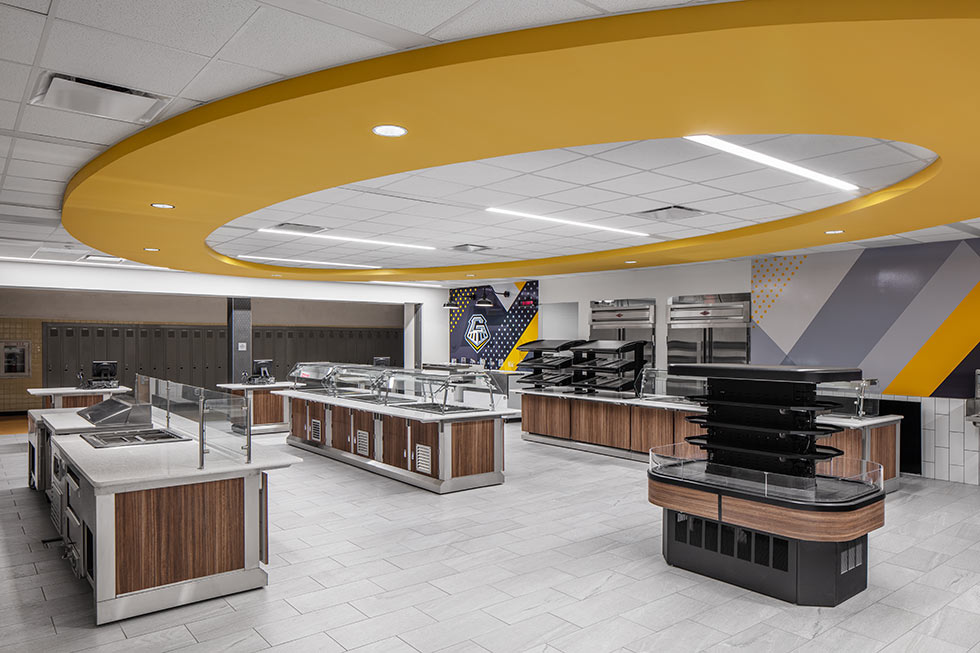
Additionally, the new Silver Streak Café references Galesburg’s rail history with images of trains and a wood wall with aluminum reveals that resembles the city’s rail map.
The renewed Galesburg Junior Senior High School has not just impressed the students, according to Asplund. Teacher morale has improved. Community members attend more events. Visiting rival districts express astonishment.
“One of the most gratifying things,” he said, “is when alumni come back, look around, and say, ‘I can’t believe this is the same building.’”
Contact us with your educational facilities challenges, or comment below to share your thoughts on this post.


